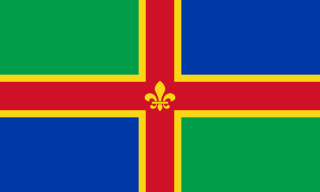
Nuncotham Priory was a priory of Cistercian nuns in Brocklesby, Lincolnshire, England.

Brocklesby is a village and civil parish in the West Lindsey district of Lincolnshire, England. It is situated 1 mile (1.6 km) south from Habrough, 4 miles (6.4 km) south-west from Immingham, and is located close to the border of both North Lincolnshire and North East Lincolnshire and is the most northerly village within non-metropolitan Lincolnshire and is also near Humberside International Airport.

Lincolnshire is a county in eastern England, with a long coastline on the North Sea to the east. It borders Norfolk to the south east, Cambridgeshire to the south, Rutland to the south west, Leicestershire and Nottinghamshire to the west, South Yorkshire to the north west, and the East Riding of Yorkshire to the north. It also borders Northamptonshire in the south for just 20 yards (18 m), England's shortest county boundary. The county town is the city of Lincoln, where the county council has its headquarters.
The priory of Nuncotham in Brocklesby parish was founded by Alan de Moncels around 1150. Throughout its history the Bishops complained that the nuns lived a little too freely. Joan Thompson, the last prioress, had a habit of keeping her own family at the convents expense, and the sisters had a habit of going out to visit friends.
There are earthworks covering a wide area which indicate the remains of building sites, fishponds, and several moat-like features. The site is scheduled. [2]

In archaeology, earthworks are artificial changes in land level, typically made from piles of artificially placed or sculpted rocks and soil. Earthworks can themselves be archaeological features, or they can show features beneath the surface.

In the United Kingdom, a scheduled monument is a "nationally important" archaeological site or historic building, given protection against unauthorised change.









